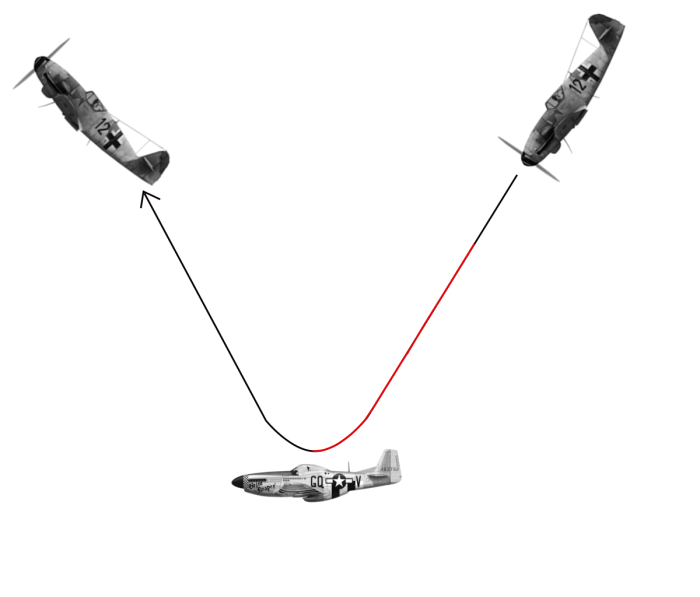Boom and zoom tactics, an exhilarating aerial combat strategy, have played a pivotal role in shaping the dynamics of air warfare. This high-energy approach, characterized by rapid climbs and dives, grants pilots a unique advantage in gaining altitude and striking opponents with precision.
Throughout history, boom and zoom tactics have been employed by legendary aircraft such as the P-47 Thunderbolt and F-86 Sabre. These aircraft, renowned for their speed and agility, capitalized on the technique’s ability to outmaneuver and outpace adversaries.
Boom and Zoom Tactics: An Overview

Boom and zoom tactics are a type of air combat maneuver that involves making repeated high-speed passes at an enemy aircraft, firing a burst of fire, and then climbing away to gain altitude before repeating the attack.
This tactic is most effective against aircraft that are slower and less maneuverable than the attacking aircraft. It is also effective against aircraft that are flying at low altitudes, as the attacking aircraft can use the terrain to mask its approach.
The advantages of using boom and zoom tactics include:
- The attacking aircraft can dictate the terms of the engagement.
- The attacking aircraft can conserve its energy by only firing short bursts of fire.
- The attacking aircraft can make multiple passes at the enemy aircraft, increasing the chances of a successful hit.
The disadvantages of using boom and zoom tactics include:
- The attacking aircraft is vulnerable to attack from other enemy aircraft while it is climbing away.
- The attacking aircraft may run out of ammunition if it makes too many passes.
- The attacking aircraft may not be able to hit the enemy aircraft if it is too far away.
Some aircraft that are well-suited for boom and zoom tactics include:
- The P-51 Mustang
- The F-86 Sabre
- The MiG-15
Energy Management in Boom and Zoom Tactics
Energy management is essential in boom and zoom tactics. The attacking aircraft must have enough energy to climb away after each pass, and it must also have enough energy to make multiple passes at the enemy aircraft.
Pilots use speed, altitude, and dive angles to gain and maintain energy. Speed provides kinetic energy, altitude provides potential energy, and dive angles allow the aircraft to convert potential energy into kinetic energy.
Thrust and drag also play a role in energy management. Thrust is the force that propels the aircraft forward, and drag is the force that opposes the aircraft’s motion. Pilots must use thrust and drag to maintain the desired energy state.
Maneuvering in Boom and Zoom Tactics
The typical maneuvers used in boom and zoom tactics are the yo-yo, the split-S, and the Immelmann turn.
The yo-yo is a maneuver in which the attacking aircraft climbs away from the enemy aircraft, then dives down and makes a pass at the enemy aircraft from below.
The split-S is a maneuver in which the attacking aircraft makes a half-roll, then dives down and makes a pass at the enemy aircraft from the side.
The Immelmann turn is a maneuver in which the attacking aircraft makes a half-roll, then climbs away from the enemy aircraft, then makes a half-roll to reverse direction and make a pass at the enemy aircraft from above.
Timing and coordination are essential in maneuvering for boom and zoom tactics. The attacking aircraft must time its maneuvers so that it can make a pass at the enemy aircraft when it is most vulnerable.
Situational Awareness in Boom and Zoom Tactics
Situational awareness is essential in boom and zoom tactics. The attacking aircraft must be aware of the position of the enemy aircraft, as well as the position of other friendly and enemy aircraft.
Radar, visual observation, and communication are all used to maintain situational awareness. Radar can be used to detect enemy aircraft, and visual observation can be used to track enemy aircraft. Communication can be used to share information about the position of enemy aircraft with other friendly aircraft.
Maintaining situational awareness in high-speed, high-altitude environments can be challenging. However, it is essential for the attacking aircraft to be able to make quick decisions and to avoid being surprised by enemy aircraft.
Historical Applications of Boom and Zoom Tactics
Boom and zoom tactics have been used in air combat since the early days of aviation. The first recorded use of boom and zoom tactics was in World War I, when German pilots used the Fokker Dr.I triplane to attack British aircraft.
Boom and zoom tactics were also used extensively in World War II, by both the Allies and the Axis powers. The P-51 Mustang and the F-86 Sabre were two of the most successful aircraft used by the Allies in boom and zoom tactics.
Boom and zoom tactics have continued to be used in air combat since World War II. They are still effective against aircraft that are slower and less maneuverable than the attacking aircraft.
Modern Applications of Boom and Zoom Tactics
Boom and zoom tactics are still used in modern air combat, although they are not as common as they once were. This is because modern aircraft are more maneuverable and have better weapons than aircraft from previous eras.
However, boom and zoom tactics can still be effective against certain types of aircraft, such as large, slow-moving aircraft like bombers and transport aircraft.
Boom and zoom tactics are also used in conjunction with other air combat techniques, such as energy fighting and missile combat.
The challenges and limitations of using boom and zoom tactics in modern warfare include:
- Modern aircraft are more maneuverable and have better weapons than aircraft from previous eras.
- Surface-to-air missiles (SAMs) can be used to target aircraft that are flying at low altitudes.
- Electronic warfare (EW) can be used to disrupt the attacking aircraft’s radar and communications.
FAQ Compilation: Boom And Zoom Tactics
What is the primary objective of boom and zoom tactics?
The primary objective of boom and zoom tactics is to gain a significant altitude advantage over an opponent, enabling a swift dive to attack and then quickly regaining altitude for another pass.
What factors influence the effectiveness of boom and zoom tactics?
The effectiveness of boom and zoom tactics is influenced by several factors, including aircraft performance, pilot skill, and the situational environment. High-performance aircraft with excellent climb rates and dive capabilities are best suited for this technique.
How does energy management play a crucial role in boom and zoom tactics?
Energy management is paramount in boom and zoom tactics. Pilots must carefully manage their aircraft’s speed, altitude, and dive angles to maximize energy gain and minimize energy loss. This allows them to maintain a high rate of climb and dive repeatedly.


